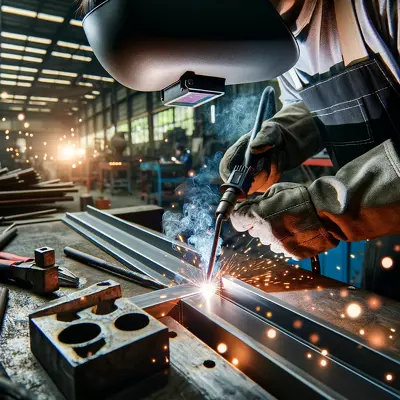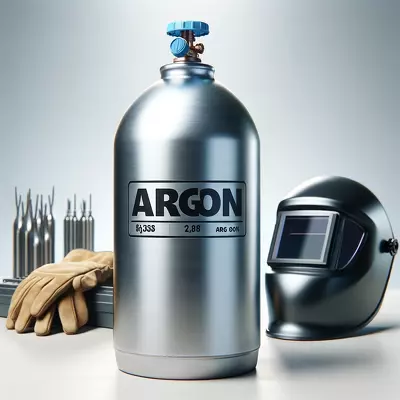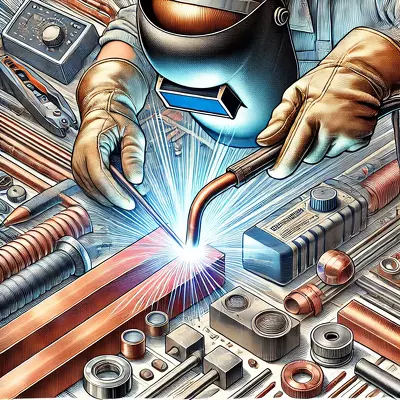6061 T6 Aluminum vs 7075: Decoding the Best Alloy for Your Next Welding Project

When it comes to choosing the right type of aluminum for your welding projects, 6061 T6 and 7075 are two of the most popular options. Each has its unique set of properties, making them suitable for different applications in the world of welding and metalwork. Understanding the differences between these two alloys can help you make an informed decision on which one to use for your specific needs.
I. Introduction to Aluminum Alloys in Welding
A. Overview of 6061 T6 and 7075 Aluminum
In the realm of metalwork and welding, the selection of materials plays a pivotal role in determining the success and durability of the final product. Among the myriad of materials available, 6061 T6 and 7075 aluminum stand out as two of the most sought-after aluminum alloys. Known for their remarkable blend of strength, flexibility, and corrosion resistance, these alloys offer distinct advantages and challenges that cater to a wide range of industrial applications. Delving into the characteristics, applications, and welding considerations of these materials reveals why they are so widely preferred in the welding community. It underscores the precision and expertise required to work with them effectively.
B. Importance of Alloy Selection in Metalwork
Choosing the right alloy is crucial for ensuring the structural integrity, performance, and longevity of metal components. Factors such as the working environment, mechanical stress, and exposure to corrosive elements dictate the suitability of each alloy for specific projects. A thorough understanding of the properties and limitations of 6061 T6 and 7075 aluminum is essential for welders and fabricators to make informed decisions that align with project requirements and budget constraints.
II. Characteristics of 6061 T6 Aluminum
A. Composition and Properties
6061 T6 aluminum is renowned for its versatility, attributed to its balanced composition of magnesium and silicon. This alloy undergoes a heat treatment process known as T6 tempering, enhancing its mechanical properties to achieve a blend of good strength, weldability, and corrosion resistance. Its ability to withstand a variety of welding techniques without compromising its structural integrity makes it a preferred choice for numerous applications.
B. Common Applications
Due to its admirable balance of strength, flexibility, and corrosion resistance, 6061 T6 aluminum is extensively used in automotive parts, construction materials, and consumer electronics. Its excellent machinability and weldability make it ideal for creating complex structures that require a high degree of precision and durability, showcasing its versatility and adaptability.
C. Welding and Fabrication Considerations
Welding 6061 aluminum is not without its challenges. Its thermal properties require a thorough understanding, and pre-welding and post-welding heat treatments are often necessary. However, the reward for this effort is a welded joint that maintains the alloy’s structural integrity. This is why selecting the appropriate welding technique and filler material is crucial for maximizing the alloy’s performance in the final product.
III. Properties of 7075 Aluminum
A. Alloy Composition
7075 aluminum alloy stands out for its high strength, attributed to its composition enriched with zinc as the primary alloying element. This alloy is often used in applications where strength is the primary concern, surpassing many steels in this regard. However, this increased strength comes at the cost of reduced weldability and ductility compared to 6061 T6 aluminum.
B. Usage Scenarios
The exceptional strength-to-weight ratio of 7075 aluminum makes it an ideal choice for aerospace, military, and sporting goods applications. Its capacity to endure extreme stress without significant deformation or failure underlines its suitability for critical components where failure is not an option.
C. Challenges in Welding
Welding 7075 aluminum presents significant challenges due to its susceptibility to cracking and weakening in the heat-affected zone. Specialized welding techniques and careful thermal management are essential to maintain the integrity of the welds. The use of 7075 aluminum often necessitates alternative joining methods or the selection of different alloys for welded structures.
IV. Comparing 6061 T6 Aluminum to 7075
A. Strength and Durability
When comparing 7075 aluminum vs. 6061 aluminum, the key distinction lies in their strength and durability. 7075 aluminum offers superior strength but at the expense of weldability and corrosion resistance. In contrast, 6061 aluminum provides a commendable balance of strength, flexibility, and corrosion resistance, making it more versatile for a broader range of applications.
B. Flexibility and Workability
6061 aluminum vs 7075 aluminum exhibits significant differences in workability. 6061’s superior flexibility and ease of fabrication make it suitable for projects requiring intricate shapes and weldments. Meanwhile, 7075’s stiffness and strength favor applications where these characteristics are prioritized over formability.
C. Cost Implications
Another critical factor is the cost difference between 6061 T6 and 7075 aluminum. Generally, 7075 aluminum is more expensive due to its higher strength and the complexities involved in its production and machining. However, for projects where budget constraints are a consideration, 6061 T6 aluminum often emerges as the more cost-effective choice.
V. Factors to Consider When Choosing Between 6061 T6 and 7075
A. Project Requirements
Understanding the mechanical and environmental demands of a project is crucial in selecting the most suitable aluminum alloy. While 7075 aluminum may be the go-to for high-stress applications, 6061 T6 aluminum’s versatility and excellent weldability make it suitable for a wide array of projects.
B. Availability and Cost
The availability of specific alloys and their cost implications can significantly influence the decision-making process. To ensure project feasibility, it’s important to consider the overall budget and the availability of each alloy in the desired form and size, underlining the importance of considering project requirements and budget constraints in the alloy selection process.
C. Post-Welding Treatments
Both alloys may require post-welding treatments to restore mechanical properties or enhance corrosion resistance. The necessity and cost of these treatments should be factored into the alloy selection process to ensure the longevity and performance of the final product.
VI. FAQs
Q: What is the primary difference between 6061 T6 and 7075 aluminum?
A: The primary difference lies in their strength and weldability. 7075 offers superior strength but is harder to weld and form than 6061 T6, which balances strength, weldability, and corrosion resistance.
Q: Can 7075 aluminum be welded?
A: Yes, but it requires specialized techniques due to its susceptibility to cracking and weakening in the heat-affected zone.
Q: Is 6061 or 7075 aluminum more expensive?
A: Generally, 7075 aluminum is more expensive due to its higher strength and the complexities involved in its processing.
Q: Which aluminum alloy is better for outdoor applications?
A: 6061 T6 aluminum is often preferred for outdoor applications due to its excellent corrosion resistance.
Q: Can 6061 aluminum be used in aerospace applications?
A: While 6061 aluminum is used in some aerospace applications, 7075 is more commonly used due to its higher strength.
Q: What are the post-welding treatments for these alloys?
A: Post-welding treatments can include heat treatments and anodizing to restore or enhance mechanical properties and corrosion resistance.
Q: How do I choose between 6061 T6 and 7075 aluminum for my project?
A: Consider the project’s mechanical requirements, welding needs, corrosion resistance, availability, cost, and any necessary post-welding treatments to make an informed decision.
Q: What is the difference between aluminum 6061 T6 and T651?
A: Aluminum 6061 T6 and T651 are both heat-treated to enhance their strength. The key difference is that T651 undergoes an additional stress-relieving process called stretching, which reduces residual stresses that could cause warping during machining. This makes T651 more stable and less prone to distortion compared to T6, making it preferable for precision applications.
VII. Conclusion
A. Recap of Key Points
This article has explored the distinctions between 6061 T6 and 7075 aluminum alloys, highlighting their composition, properties, applications, and considerations for welding and fabrication. Understanding these differences is crucial for selecting the appropriate alloy to meet the specific demands of various projects, balancing factors such as strength, ductility, weldability, and cost.
B. Final Recommendations
Choosing the right aluminum alloy requires a comprehensive evaluation of project requirements, including mechanical stresses, environmental conditions, and budget constraints. For projects demanding high strength and durability, 7075 aluminum may be the ideal choice. Conversely, 6061 T6 aluminum offers a versatile and cost-effective solution for a wide range of applications, providing a balance of strength, weldability, and corrosion resistance.
VIII. Suggested Readings
Before diving into your next project or expanding your knowledge on aluminum alloys, consider exploring these informative resources:
- “Aluminum: Properties and Physical Metallurgy” by John E. Hatch – An essential guide for anyone looking to deepen their understanding of aluminum’s properties, processing, and applications.
- “Welding Aluminum: Theory and Practice” by the American Welding Society – A comprehensive resource on aluminum welding techniques, challenges, and best practices.
- “Materials Science and Engineering: An Introduction” by William D. Callister Jr. and David G. Rethwisch – Offers a broad overview of material properties, including those of aluminum alloys, providing a foundational understanding for engineers and metallurgists.
- “Metallurgy for the Non-Metallurgist” by Arthur C. Reardon – A primer on metallurgy that simplifies complex concepts for those without a background in the field, including sections on aluminum alloys.
These readings offer valuable insights into the science and application of aluminum alloys, equipping professionals and enthusiasts with the knowledge to make informed decisions in their projects and research. Whether you’re a seasoned welder, a materials engineer, or a hobbyist, these resources can enhance your understanding and application of aluminum in the modern world.






